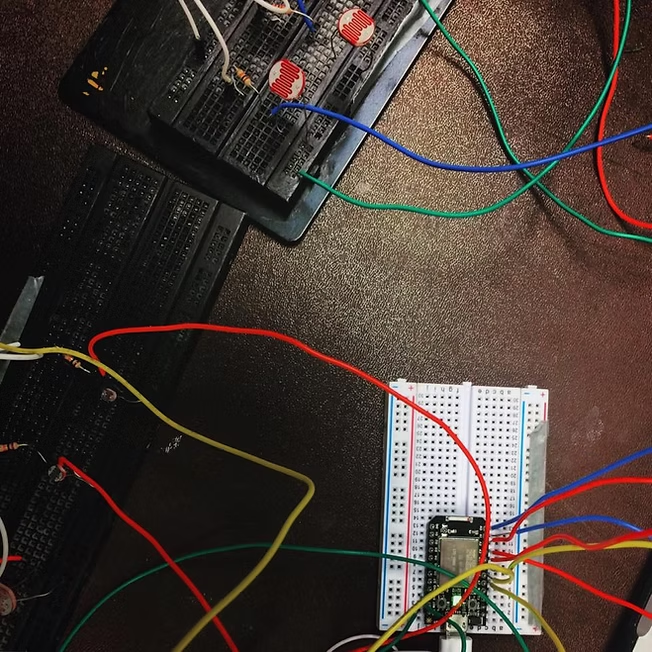遊擊策略:用藝術滲透政治
李子同視自己為臥底藝術家,透過藝術的視角審視政治制度,探索藝術如何服務政治背景並被政治背景重塑。
他們深入台灣的民進黨、時代力量黨等政黨,拜訪位於達蘭薩拉的西藏流亡政府,並與非政府組織和《新綻》雜誌等平台進行接觸,以隱姓埋名的藝術家身份在政壇內部運作。
除了實地研究之外,他們還在公共政治空間進行遊擊式的美學幹預——在不同地區的博物館、投票站和其他公共空間附近領導運動、舉辦表演、投射視覺效果和播放音樂。
這些小規模的挑釁形成了一種分散而又相互連結的抵抗模式,模糊了藝術、激進主義和日常生活之間的界線。
Commemorating Ling Guan Hua: The Anti-Black Box Movement, , with aesthetic direction and illustrations by Tzu Tung.
2016
Occupy the Movement
Various art intervention in political field
Lee Tzu Tung investigates real political systems through an artist’s lens, exploring how art can serve and be transformed within these contexts. As an undercover artist, they embed themself in Taiwan’s DPP and NPP parties, activist NGOs, and leading movements, blurring the line between political engagement and artistic practice.
2015
Compose an Occupation
A hybrid media installation employing Arduino microcontrollers, real-time light sensors, and multiple pendulum equipped with an LED system
Compose the Occupation is a sound performance using photo-sensitive instruments controlled by light pendulums. The work mixes government propaganda songs with revolutionary slogans from the streets, allowing the artist to manipulate how these opposing sonic forces intertwine through light and movement.
2014
Occupy the Democracy
Projection installation using documentary photography from Hong Kong’s 2014 Umbrella Revolution, projected onto a public voting venue in Taipei on mayoral election day.
In solidarity with Hong Kong’s fight for democracy, this work projects an image from the 2014 Umbrella Revolution onto a Taipei voting venue during Taiwan’s mayoral election. It reflects the shared resistance of Hong Kong and Taiwan against the encroachment of authoritarian power from the People's Republic of China.
2014
Occupy Sinocentrism
This work contrasts Taiwan’s everyday reality with its inherited cultural symbolism. A motorcyclist repeatedly circles the National Palace Museum without ever entering—serving as a metaphor for how Taiwanese people, while indoctrinated to see themselves as the inheritors of Chinese culture, remain at a distance, revering an imagined cultural center they cannot access or have never connected to. The action is documented and projected onto traditional Chinese rice paper, accompanied by an installation of scattered branches that casts Shan-Shui-inspired shadows across the scroll. This layering bridges national iconography with lived experience, questioning the dissonance between ideological heritage and contemporary identity.
2014
Tibet World
Participatory video workshop and social practice project involving storyboard drawing, smartphone videography; conducted with Tibetans in Dharamsala, India.
In Dharamsala, India, where thousands of Tibetan refugees have fled in search of freedom, this project began as a documentary but evolved into a participatory video workshop. Artist Lee Tzu-Tung taught refugees to use smartphones and simple editing tools to storyboard and film their own stories—ultimately transforming the process into a mutual exchange that empowered both teacher and participants through resilient narratives of identity, freedom, and belief.


















































